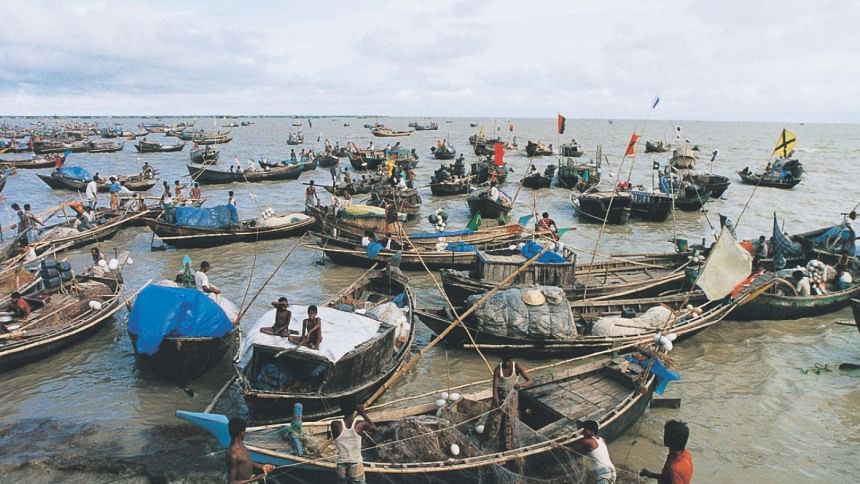Don't leave behind coastal districts

The Election Commission (EC) has declared the schedule of the eleventh national elections—the election will hopefully be held on December 30, 2018. The ruling Awami League has drafted its manifesto with a "forward-looking vision", which is to be unveiled by December 15. The manifesto incorporates main ideas of Sustainable Development Goals (SDGs), the Perspective Plan (2021-2041) and the Bangladesh Delta Plan 2100. Other political parties like BNP, Jatiya Party and Jatiya Oikyafront are also preparing their manifestos. Because an election manifesto is a set of promises made by political parties to the people at the time of an election, it has a crucial role to play in terms of public policy towards reducing the gap between the advanced and less-advanced districts. The issue of regional disparity deserves to be a central issue of the development planning and policymaking process.
An important factor that may have contributed to the differences in regional poverty indicators is the issue of the "east-west" divide in terms of access to growth centres. This divide is defined in terms of location of the divisions with reference to the three rivers: the Jamuna, the Padma and the Meghna. Three divisions are on the western side of the rivers: Rajshahi, Rangpur, Khulna and Barishal. The other three divisions, Dhaka, Chattogram and Sylhet, are on the eastern side. Concerning regional disparities, the divisions of Dhaka, Chattogram and Sylhet seem to do better in terms of both growth and poverty reduction as compared with Rajshahi, Rangpur, Khulna and Barishal. Bangladesh has a coastline of 710 kilometres and an Exclusive Economic Zone (EEZ). The conventional view is that the land that is inundated by the high and low tides is called the coastal belt. Twelve districts, out of our 19 coastal districts, are lagging behind.
While national statistics provide information on macro indicators of growth, income, employment, education, health, etc. it does not show the full picture. Information on several micro indicators such as access to water and sanitation, structures of houses, level of solvency and many more is also available. These give us a pretty good idea about the socioeconomic situation of the sections of people across the country. But what we miss in these statistics are the ground realities experienced by the people. We also miss the insights of local people themselves who have a clear understanding of their developmental problems and the way out.
In 1991, the election manifestos of two major political parties (AL and BNP) of Bangladesh did not especially focus on coastal development issues. In 1996, they focused on khas (government-owned) land distribution among landless people, island development, disaster management, riverbank erosion, and development of tourism, including in Sundarban. Coastal issues were incorporated a bit more in 2001 and 2008. These were mainly issues of land reclamation, irrigation, salinity intrusion, low-cost waterway transportation, deep sea-port construction, health services for people of char lands, Padma bridge construction, loan support for small-scale fishermen, wetland development, expansion of asrayan (poverty alleviation through rehabilitation and income generation), coastal forestation, and taking prioritised actions for ensuring balanced development of lagging coastal areas.
However, many commitments made in election manifestos remain only in black and white. Aspirations of disadvantaged coastal communities are not fulfilled. Even many crucial issues, such as fishermen affected by robbers at fishing grounds, lack of policy initiative for establishing coastal resource-based industries, youth delinquency, lack of adequate research and replication on climate-smart agriculture, lack of special budget allocation for lagging coastal districts, women's unemployment and insecurity, have not been addressed in policy agendas.
Approximately one-third of our total population lives in coastal districts. It is noteworthy that this zone has a diverse eco-system: mangrove, marine, estuary, islands, coral, sandy beaches, sand dunes, and both "world heritage sites" and "ecologically critical areas". The coastal zone offers immense potential for economic growth. Renewable and non-renewable energy, marine resources, and beach minerals tourism are some of the less explored areas. We should see coastal areas as prospective zones. A long-term (minimum 20-25 years) comprehensive plan for development of coastal areas and mainstreaming it with national and sub-national planning documents is needed. It might be helpful to establish a strong coordinating body at the national level for the well-being of coastal communities. Towards that goal, election manifestos should capitalise on coastal potentials—the "Blue Economy"—for poverty reduction and overall development.
Mohammed Mamun Rashid is Programme Manager, Civic Engagement, Transparency International Bangladesh (TIB).
E-mail: [email protected]





Comments